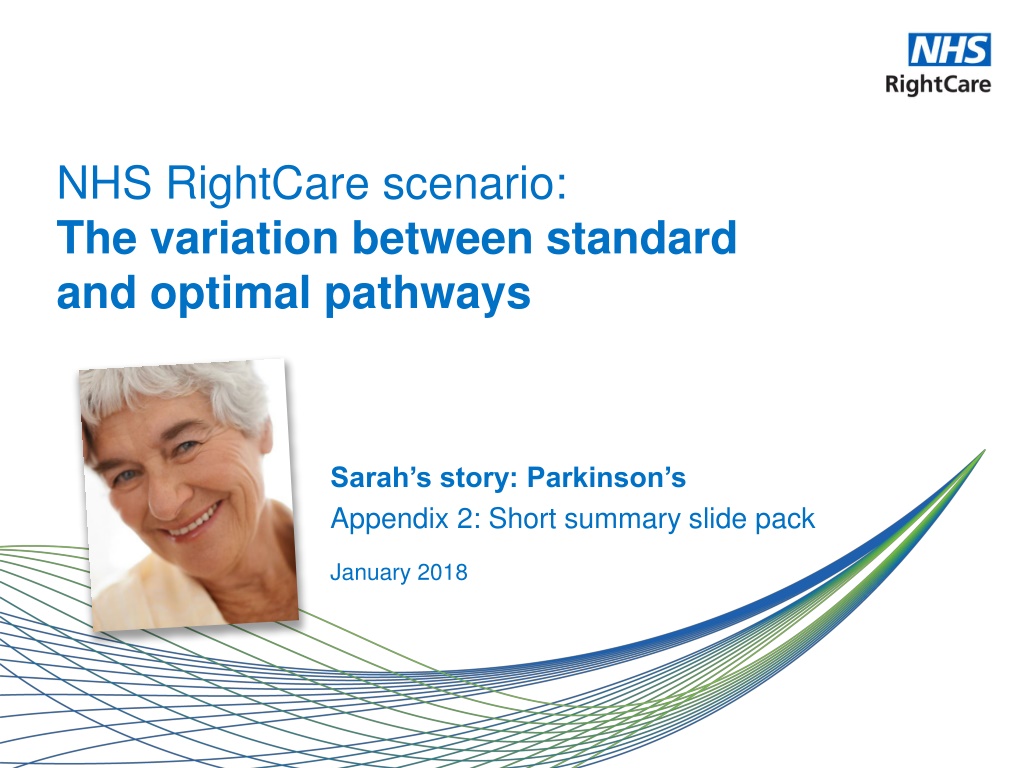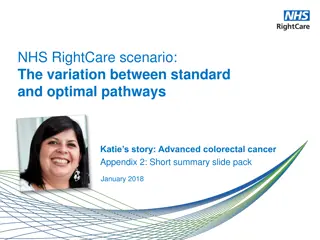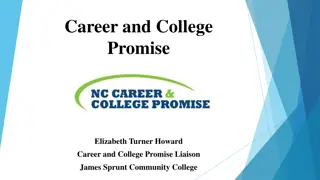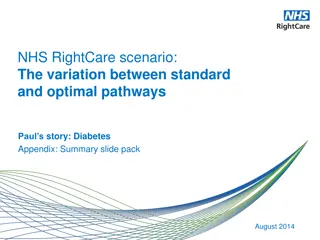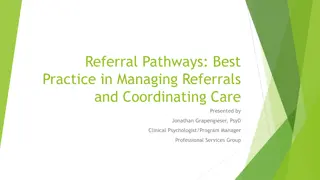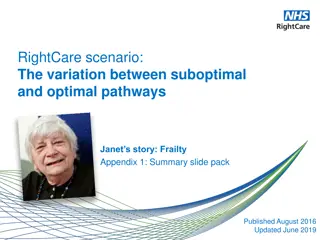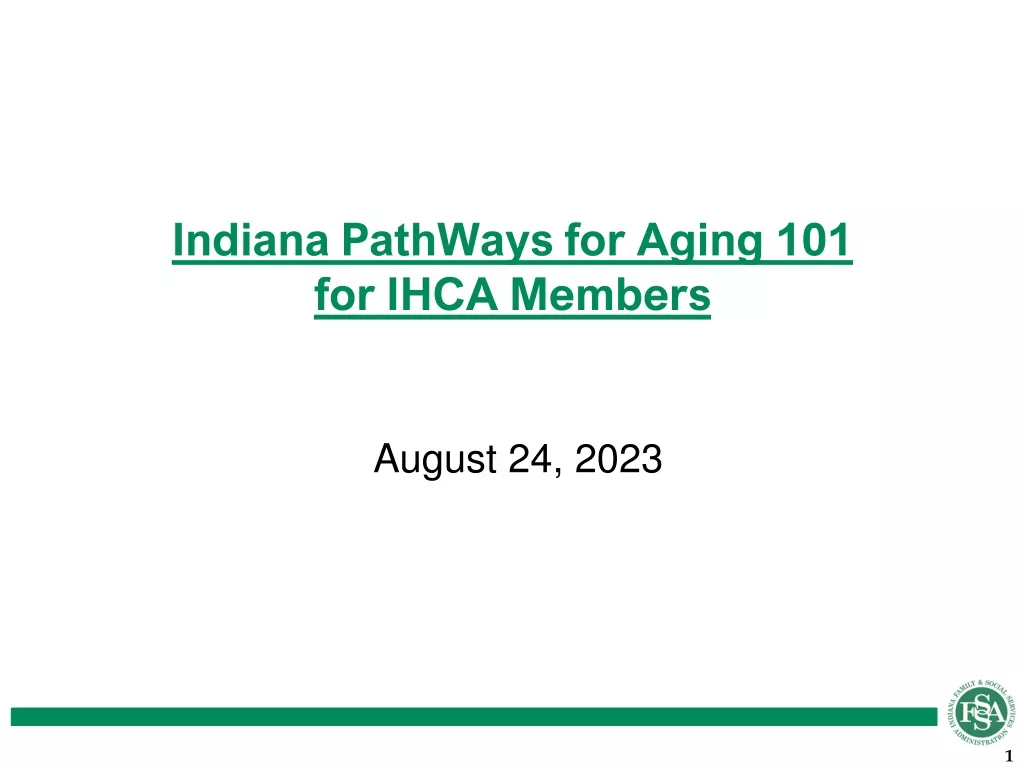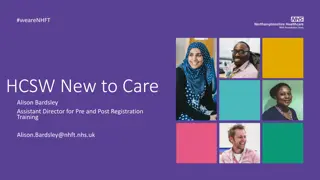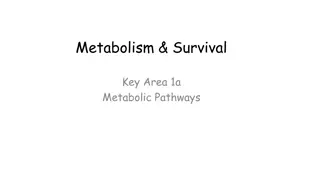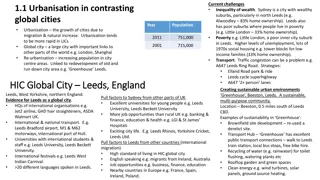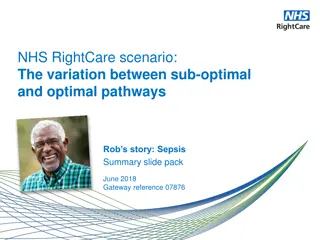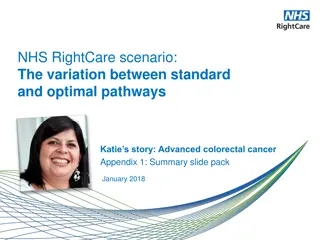Contrasting Parkinson's Pathways: Sub-optimal vs Optimal
Sarah's journey with Parkinson's illustrates the stark difference between a sub-optimal pathway leading to distress and a well-coordinated optimal pathway resulting in a peaceful end at home. Timely diagnosis, specialized support, coordinated care, and proactive interventions played key roles in Sarah's quality of life and end-of-life care.
Download Presentation

Please find below an Image/Link to download the presentation.
The content on the website is provided AS IS for your information and personal use only. It may not be sold, licensed, or shared on other websites without obtaining consent from the author. Download presentation by click this link. If you encounter any issues during the download, it is possible that the publisher has removed the file from their server.
E N D
Presentation Transcript
NHS RightCare scenario: The variation between standard and optimal pathways Sarah s story: Parkinson s Appendix 2: Short summary slide pack January 2018
Sarah and the sub-optimal pathway Sarah, a 70-year-old retired librarian, lives with her husband Ian. She is an active volunteer in the community Sarah first visited her GP in March of year one she had noticed slowing down . At the third visit in July, her GP started to suspect Parkinson s and organised investigations and treatment The diagnosis of Parkinson s was confirmed by the neurologist almost a year later and her medication changed Sarah and Ian tried to come to terms with her diagnosis but her social life was diminished because of symptoms causing her embarrassment In year six, Sarah was admitted for surgery on her troublesome bunion. The Parkinson s medication was omitted pre-op and not reinstated quickly enough post-op, causing significant physical regression and led to prolonged hospital stay In year seven, the caring situation at home was reaching crisis point and Sarah was admitted to a Community Intermediate Care bed for respite where she started on an antidepressant There was a catalogue of primary and secondary care events which were distressing for both Sarah and Ian and affected quality of life for both of them By May of year nine, Sarah s condition was deteriorating relentlessly. Her care package was increased but they still struggled to cope When she deteriorated acutely, she was transferred to the acute medical unit but died there 18 hours later; staff hadn t had time to get to know or support her or Ian Ian was very distressed and became depressed and mentally unwell for over a year after Sarah s death
An integrated Parkinsons pathway. Care needs can be made explicit and coordinated between team members 3 Source: Peel et al (2013) BJNN, 9(6): 292-300
Sarah and the optimal pathway In April, Sarah saw her GP who suspected Parkinson's and immediately referred her, untreated, to the local neurology clinic. Treatment was initiated quickly using shared decision making The Parkinson s nurse specialist provided excellent support around medication, links to therapists, signposting to the Parkinson s UK website and introduced the idea of advance care planning Sarah had structured reviews with her practice nurse and GP in between annual reviews at the neurology clinic, with the Parkinson s nurse specialist available directly by phone at any time Sarah undertook exercise classes in the community and Ian joined a carer support group run by the local Parkinson s UK branch for social activities and mutual support, attending regularly over that year. This support was very valuable and continued for four years Sarah s hospital stay for her bunion surgery was minimal (four days) and uneventful because her medication regime was tightly managed There were a series of primary and secondary care interventions to support both Sarah and Ian as her condition began to deteriorate. The specialist palliative care team, primary care team and other specialists worked together to support her and Ian Sarah was regularly discussed at MDT meetings, her records updated on the Electronic Palliative Care Coordinating System and her care package increased to meet her needs In year 10 Sarah died peacefully at home with Ian at her side Three months after Sarah s death the Parkinson s nurse specialist visited Ian, who expressed his gratitude for all the care they both received 4
Financial information Analysis by provider Sub-optimal Optimal Optimal % Third Sector 2,880 1,219 42% Acute 50,757 3,542 7% Ambulance service 2,330 0 0% Community hospital 3,843 2,404 63% Community teams 3,025 7,351 243% Primary care 702 1,552 221% Social services 4,466 8,214 184% Grand total 68,004 24,282 36% Secondary care expenditure in the scenarios is radically different. The optimal case represents only 7% of the original sub-optimal case a reduction of 47k. Primary care and social care expenditure are necessarily higher in the optimal scenario as the optimal case invests in early intervention, community teams, practice-level support and social services (which raises the importance of improved strategic budgeting across the wider health economy). This is more than offset by the secondary care savings. However, please note the financial costs are calculated on a cost per patient basis and local decisions would need to take a population view of costs and improvement.
Financial information Analysis by cost category Sub-optimal Optimal Optimal % Community care Elective admissions Intermediate care Non-elective admissions Palliative and end of life care Prescribing and meds optimisation Prevention and public health Primary care management Rehabilitation Secondary care management Self care Urgent and emergency care Grand total 8,732 800 3,607 13,600 480 313 0 360 5,768 32,692 0 1,654 68,004 10,718 1,600 2,404 0 2,958 2,015 457 879 1,362 1,609 155 125 24,282 123% 200% 67% 0% 617% 644% n/a 245% 24% 5% n/a 8% 36% This is a scenario that clearly highlights that proactive planning and correct signposting to well trained (and equipped) teams is important - there is a significant impact on patient outcomes, quality and finance. Care can be improved by investigating the root cause of sub- optimal care and working with clinicians to design an improved evidence-based pathway. 6 Not only is Sarah s health and quality of life much better in the optimal scenario, the cost savings are significant.
Further information For more information about Sarah s journey, NHS RightCare or long term conditions you can: Email rightcare@nhs.net england.longtermconditions@nhs.net Visit www.england.nhs.uk/rightcare Tweet @NHSRightCare You can watch the supporting video on the NHS RightCare YouTube page 8
